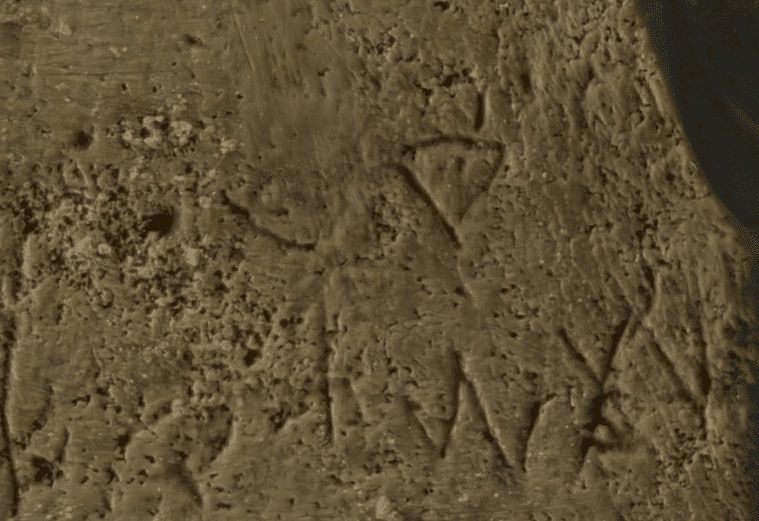A 3,700-year-old ivory delousing comb found at Tel Lachish, Israel, contains what appears to be the oldest full sentence written using the ancestor of alphabets in the place of its invention. According to a new study, the letters reveal a lot about how the alphabet evolved, plus the concerns of antiquity’s elite.
The invention of writing transformed the world for many reasons, one being the insight it offers into what was important to people in previous eras. The comb indicates one of those things was biting insects – specifically, lice that inhabited beards.
Neither the Ancient Egyptians nor Mesopotamians used what we recognize today as an alphabet, beginning with pictural representations of words that became more abstract over time. It was the Canaanite languages that are thought to provide the origins of the letters used in modern European and Arabic writing.
The suspected earliest examples of this writing are about 3,800 years old. Both, however, come from Egypt and were apparently made by migrant workers. When it comes to early examples of the alphabet’s use from what was then Canaan, all we have is scattered words from before about 3,300 years ago.
The Tel Lachish comb changes that, even though the letters are so small and shallow they were not noticed when it was first excavated in 2016. The fineness of the writing suggests literacy may have been more widespread in Canaan at the time than previously imagined.
Some of the letters, scene here in close-up, look very familiar. Image Credit: Dafna Gazit, Israel Antiquities Authority
The shapes of the comb’s 17 symbols have led the paper’s authors to estimate its age at 3,700 years, although it was found in a much younger layer of the ancient city. They translate the words to; “May this tusk root out the lice of the hair and the beard.” Clearly, writing at the time made much more efficient use of letters, which makes sense when they had to be painstakingly scratched on clay, bone, or elephant tooth.
This is the first inscription from the region relating to the purpose of an object, rather than referring to its owner.
“This is the first sentence ever found in the Canaanite language in Israel,” said Professor Yosef Garfinkel of the Hebrew University of Jerusalem in a statement. “There are Canaanites in Ugarit in Syria, but they write in a different script, not the alphabet that is used till today.”
A reconstruction of the letters engraved on the comb shows some that look like our own alphabet, but also a drawing of a cat.Image Credit: Daniel Vainstub
The postage stamp-sized comb has been damaged and has lost most of its teeth, but once had six thick protuberances on one side and 14 finer ones on the other. It is thought the larger teeth were used to untangle knots, while the smaller ones could remove lice and eggs – a system still in use today for tackling infestations of biting insects. Louse chitin was even found on the comb’s second tooth.
Even before the writing was noticed, the comb told us something about life in the Middle East at the time. Anything made of ivory would have been a luxury item, requiring importation from Africa. Lice have been known to plague humanity for at least 10,000 years, and the comb proves they were even a problem for the wealthy.
The comb’s makers could never have imagined their newfangled alphabet would lead to a revolution in knowledge storage and transfer. Among the technologies this would eventually make possible were insecticides and washing machines that would indeed help root out lice – at least for those able to afford the modern equivalents of ivory combs.
The paper is available open access at the Jerusalem Journal of Archaeology.
Source Link: First Full Sentence Using The Alphabet Is An Anti-Beard Lice Spell
